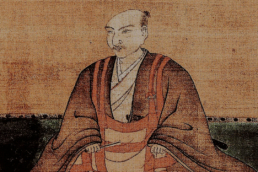Japan History: Asakura Yoshikage
Asakura Yoshikage (12 October 1533 - 16 September 1573) was a Japanese daimyō of the Sengoku period (1467-1603) who ruled a part of Echizen province.
Asakura Yoshikage, head of the Asakura clan
Author: SaiKaiAngel
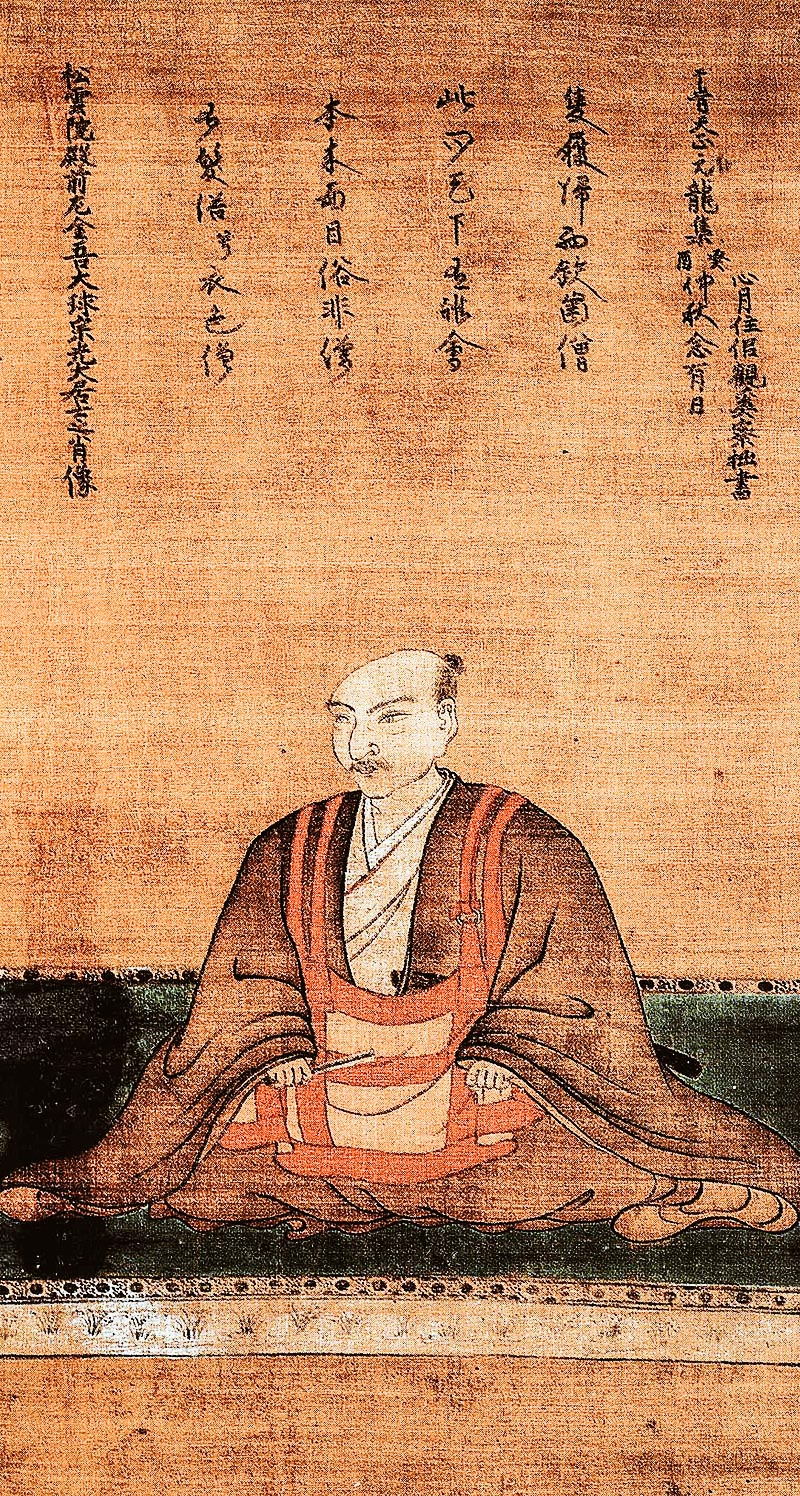
photo credits: wikipedia.org
Asakura Yoshikage was born in the Ichijōdani castle of the Asakura clan in Echizen province. His father was Asakura Takakage and his mother seems to have been the daughter of Takeda Motomitsu.
Yoshikage succeeded his father as head of the Asakura clan and lord of Ichijōdani Castle in 1548, demonstrating great skill in political and diplomatic management, especially through his negotiations with the Ikkō-ikki at Echizen. Thanks to them, Echizen enjoyed a period of relative peace compared to the rest of Sengoku-period Japan, becoming a place for refugees fleeing violence in the Kansai region. Ichijōdani even became a centre of culture modelled on the capital of Kyōto.
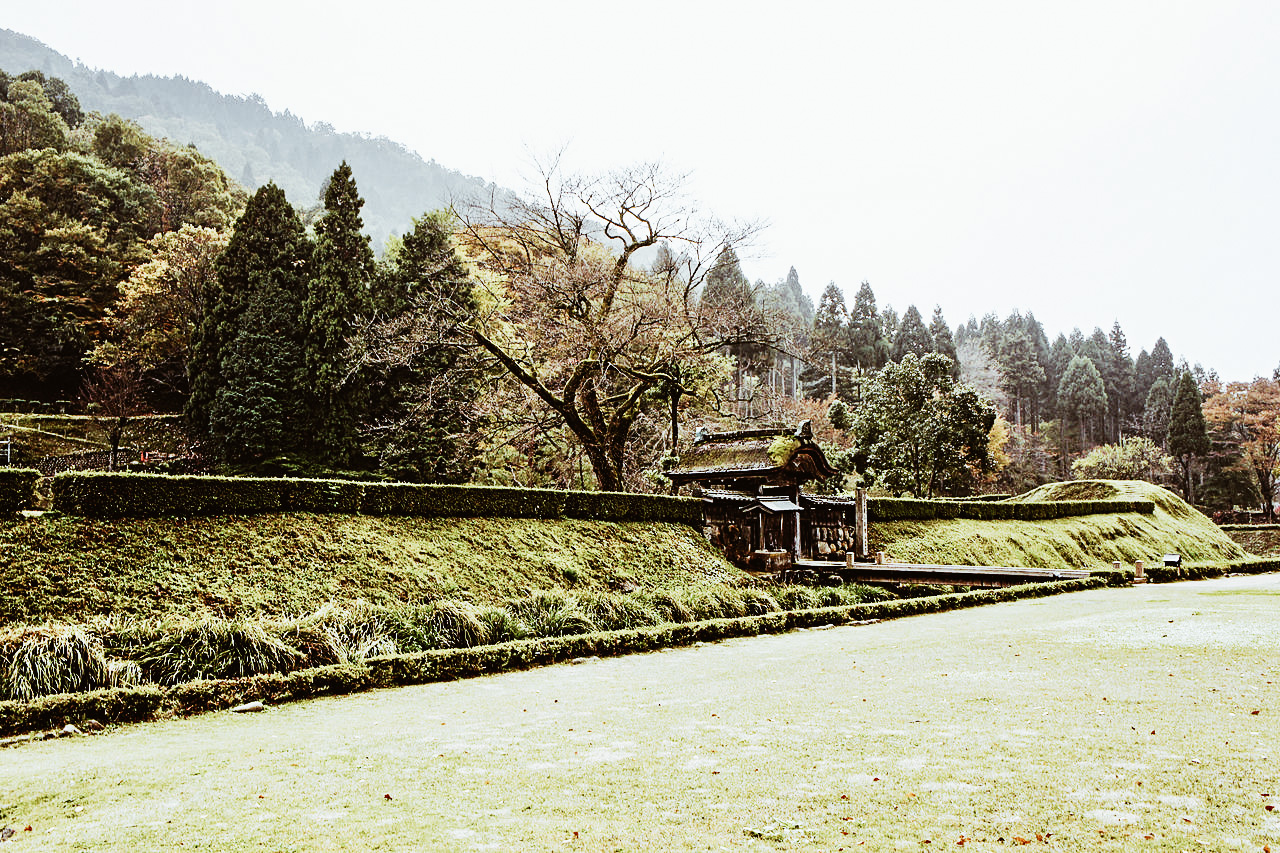
Ichijōdani Asakura Family Rovine storiche | photo credits: wikipedia.org
Conflicts with Oda Nobunaga
After his capture in 1568, Ashikaga Yoshiaki appointed Yoshikage as regent and enlisted the help of the Asakuras to drive Nobunaga from the capital. In 1570, Oda Nobunaga then invaded Echizen and succeeded in invading the castle due to Yoshikage's lack of military skill. Azai Nagamasa, Yoshikage's brother-in-law, attacked Nobunaga with the Asakuras at Kanegasaki, but Nobunaga withdrew his troops and managed not to be captured. At the Battle of Anegawa, Yoshikage and Nagamasa were defeated by the superior forces of the Oda and Tokugawa clans led by Nobunaga and Ieyasu.
Death
Yoshikage fled to Hiezan after the battle and attempted to reconcile with Nobunaga, which enabled him to avoid conflict for three years. In 1573, during the siege of Ichijodani Castle, Yoshikage was betrayed by his cousin, Asakura Kageaki, and was forced to commit seppuku at the age of 39. His death also destroyed the Asakura clan.
Business Focus: The importance of communication and marketing in Japan in times of pandemic
Communication has always been important in our lives and in this time of pandemic due to the spread of COVID-19, its essentiality has become even stronger. At a time when we are forced to forego hugs and physical proximity, what would we do without the Internet? Thanks to communication we can get closer to the rest of the world, our door is not closed thanks to the internet.
The importance of communication and marketing in Japan in times of pandemic
Autore: SaiKaiAngel

photo credits: mosaikoweb.com
The COVID-19 pandemic is certainly a very difficult time in which we are all involved, but we try to see the positive in this as well. What do they say? If you feel like you're in a tunnel, decorate it! So, while we are waiting to see the light at the end of the tunnel, we are trying to do everything to save our company and our relationships. The imposed lockdowns are very difficult to manage, but how much have they succeeded in making us realise the importance of the "small" things? I put the word SMALL in quotes, yes, because in this pandemic we have realised how BIG the SMALL things are. How special our normality is. How much we have looked for a hug, even if it is virtual, how much we have reinvented ourselves to keep alive a work project for which we have done so much.
Let's take advantage of this moment to start again even stronger than before, let's take some time to think, reinvent ourselves and prepare for total recovery.
Remember, however, that there are no miracles! You have to rely on the world of social marketing, but not alone. There are specialists in the field, people whose job it is to advise you and accompany you in the world of social marketing and communication without making you run into obstacles (like us).

photo credits: mosaikoweb.com
Never put your business activities on hold.
We are lucky enough to have the internet, why put a job or business on hold? The idea that one day the internet could go from being important to essential has been around for a while. We can attend meetings, we can organise, we can actually work together and stay in touch with our customers, all online. We can also focus on stepping up the content of our social media, of our websites, so that as soon as there is a chance to restart after the pandemic, we will be ready!
If our shop is closed, why take away the possibility of creating an e-commerce to continue selling our products? If we haven't felt the need to do so until now, we are now faced with this possibility, which is gradually becoming more and more important. If we can, let's try to build an online channel to communicate and continue our business! Let's also try to 'decorate' it as best we can.
Let's reinforce our corporate values and corporate image online!
Let us be seen, we have the opportunity! Let's not stop events, let's create them online and if we really don't want to do that, let's stop and organise the ones in presence, we have the possibility to do that, let's strengthen our communication network now!
Let's keep in touch!
Many children can continue to study and attend school thanks to Distance Learning, what we all know now as DAD. Is it important? Of course it's a help. If there wasn't this possibility of online meetings, children would surely be completely excluded from teaching and meeting their classmates. Instead, thanks to Distance Learning, students are able to interact with each other and maybe even distract themselves. Distraction in these moments of closure is very important, if there were no possibility to communicate online, we would really be locked out of the world. Perhaps now more than ever we realise how important online communication can be.
Still having doubts? Let's go and see what's happening in the rest of the world and especially in Japan, which has always been our focus.
The importance of communication and marketing in Japan in times of pandemic
Japan has always been very technological, it has always believed, almost more than anyone else, in the importance of online communication and marketing, and in fact it is now certainly at a better advantage than those who have stuck to tradition.
Japan lives with social networks in order to stay in touch with the rest of the world. Let's take a look at the most used social networks in this country with the relative percentages thanks to Statista:
- LINE 77,4%
- Twitter 38,5%
- Instagram 35,7%
- YouTube 23,2%
- Facebook 21,7%
- TikTok 8,1%
- Skype 7,1%
Il caso LINE


photo credits: google.com
As you can see from the statistics, if in the West we use Whatsapp, Facebook and Instagram more, in Japan they rely a lot on LINE and Twitter. Do you know LINE? It is considered to be the Japanese Whatsapp, and has around 84 million monthly active users in Japan (end of 2020 statistics).
What makes LINE so popular?
LINE was born in 2011 from a collaboration with Naver, a South Korean platform.
Immediately after the great earthquake in Japan in 2011, most conventional communication channels were disrupted due to power outages. Therefore, official sources turned to online to communicate the news and confirm the safety of friends and family. The app was released for public use later that year, and proved very appealing to Japanese consumers due to its unique and customisable design, allowing for both private and business use.
How do the Japanese use social networks?
Compared to neighbouring countries, Japanese people used social networks 65% compared to 88% in Taiwan and 87% in South Korea. In contrast, as of January 2019, Japanese internet users spent an average of 4.8 hours a day with digital content, while Japanese 18-34 year olds used up to six hours. According to a survey, the main reasons for using social media among the younger generation are the convenience of gathering and sharing information, as well as connecting with friends and colleagues.

photo credits: epigeum.com
We have this moment to think about it and to reactivate as soon as possible. this has always been our job and now we finally realise that it has never been more useful. It was already before, but now it has become essential. We are ready to accompany you and are you ready for the (online) rebirth?
5 must-see destinations for 2021
We all need to feel free again, why not do it as soon as everything ends with special destination Japan? We are called Japan Italy Bridge, obviously we love Japan, but we recommend it to everyone. Those who have been there will want to return, those who haven’t are dreaming of going there.
The 5 destinations in Japan not to be missed according to Japan Italy Bridge
Author: SaiKaiAngel
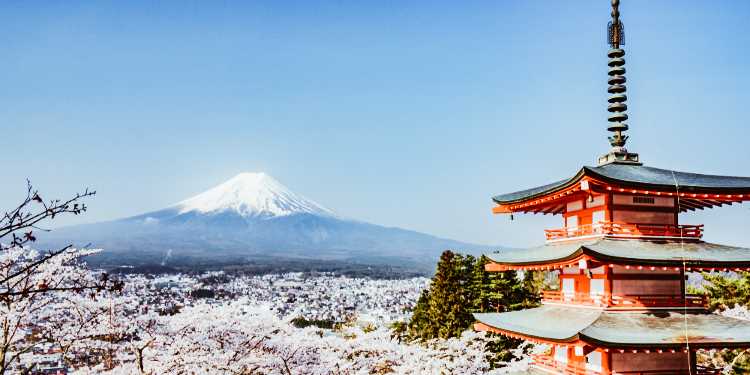
photo credits: expat.com
Japan should be seen and experienced, because each of its smallest part can give us something unique, can enrich us with experience and tradition, if you rely on the experts of JNTO you can go on the safe side! Japan is not only an unmissable destination, but it’s also completely safe, with all its attentions and precautions. With JNTO you will always be guaranteed the right distance, temperature detection in stores and places of interest, protections such as the mask. Safe, reliable and... absolutely dreamy.
You surely know the usual cities to visit, but this time we would like to show you other places that we particularly like. Are you ready? Start packing your bags for your dreamy and safe travels!
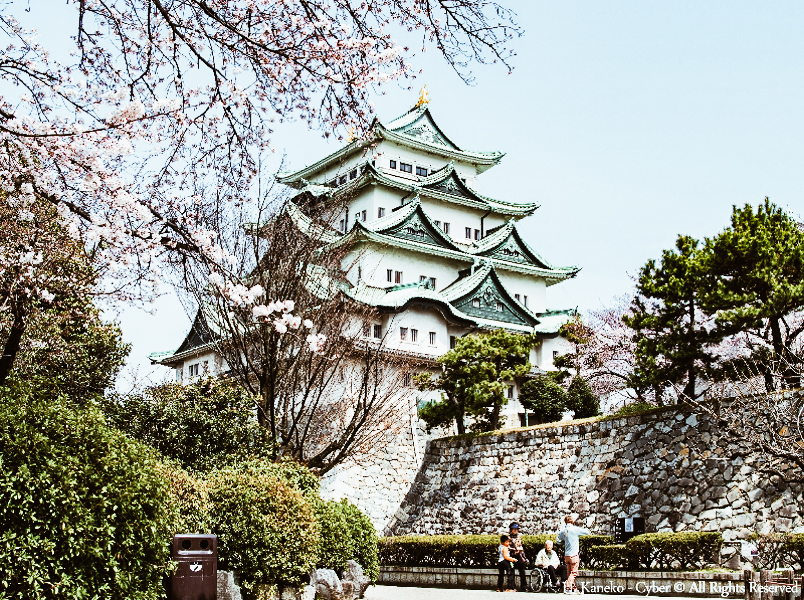
photo credits: viahero.com
Nagoya
Nagoya is a city in the Chūbu region of Honshū Island in Japan, with a port on the Pacific Ocean and two airports, including the new Chūbu-Centrair International Airport, which opened on February 17, 2005.
What to see in Nagoya
First and foremost, we believe the Atsuta Shrine is the most important. This shrine, founded over 1900 years ago is one of the oldest Shinto shrines in Japan. Here, for is kept the sword Kusanagi no tsurugi, one of the Three Sacred Treasures of Japan. This treasure, however, is not on display, but visible only to the emperor and a few monks. The shrine is located in a very serene forest to visit to relax.
Also, not to be missed is Nagoya Castle which was the residence of the Owari branch of the Tokugawa family, built in 1612 by order of Tokugawa Ieyasu. In spring and autumn, you can find a variety of flowers and plants absolutely unique in the world, are you curious to see them?
The Tokugawa Museum of Art is now where the residence of the Owari branch of the Tokugawa family once stood and collects and displays some of the family's great artistic heritage. The collection includes samurai swords and armour, costumes, tea ceremony utensils, books, maps and scrolls from the Genji Monogatari. Near the museum is a beautiful Japanese garden, the Tokugawa-en.
Osu Kannon Temple, on the other hand, is a Buddhist temple located in the centre of Nagoya. The temple houses a rich collection of ancient Japanese and Chinese texts.
Nagoya is home to very important museums, including The Railway Museum that exhibits ancient steam locomotives including the legendary C62 portrayed in the anime Galaxy Express 99 and the Toyota Museum of Industry and Technology that traces the evolution of manufacturing processes and aspects of industrial technology.
Kobe
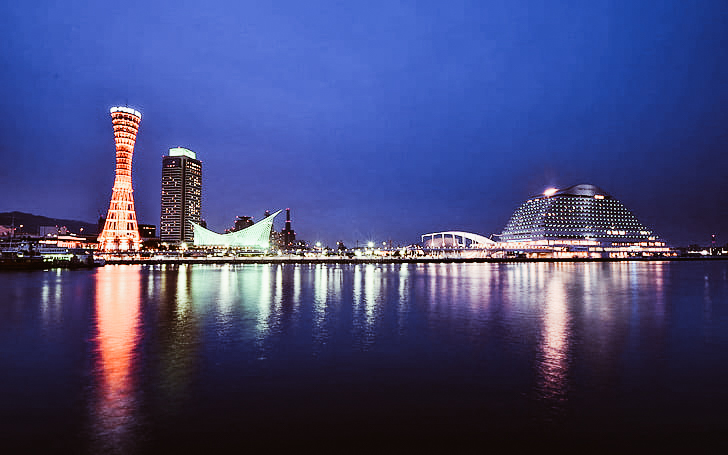
photo credits: wallpaperflare.com
Kōbe is located on the island of Honshū. For about six months in 1180, it was the capital of Japan, when Emperor Antoku moved to Fukuhara kyō, which was located in today's Hyōgo-ku city district.
What to see in Kobe
A place not to be missed and enjoyed completely is the Shin-Kobe and Nunobiki Herb Garden Cable Car that starts near Shin-Kobe Station. On the way up, you'll pass by the Nunobiki Waterfall and Nunobiki Herb Garden but the focal point of the ride is at the observation deck located right next to the top station, which offers spectacular views of Kobe both day and night.
Also take a trip to Sorakuen Garden which was part of the residence of Kodera Kenkichi, former mayor of Kobe opened to the public in 1941.
Nostalgia for parks? Meriken Park is a mix of nature and modernity. Along with the greenery, you can range up to a collection of modern art installations. In this park, you can find the red harbour tower and the Maritime Museum.
The Kobe Museum was opened in 1982, with collections from the Kobe Archaeological Museum and the Namban Museum of the Arts. The museum's permanent exhibition offers a collection of maps from different regions and eras of Japan, as well as artefacts representing Japan's trade with foreign countries.
You can't leave Kobe before making more than a quick trip to the Arima Onsen, a famous spa town in a natural mountain setting. Your relaxation is assured!
Delight your senses, delight your eyes as well at the Akashi Kaikyo Bridge. At over 4 km long, it is the longest suspension bridge in the World. The bridge connects the island of Honshu to the island of Awaji.
In Kobe, we find a museum not to be missed, the Earthquake Museum. On January 17, 1995, at 05:46, the city of Kobe was hit by the Great Hanshin Awaji Earthquake, causing the death of over 5000 people and the destruction of tens of thousands of homes.
The museum, which opened as a memorial in 2002, includes a large theatre with a screen that plays realistic images of the earthquake's brutality, and various interactive games on disaster prevention.
To end our visit to Kobe, let's enjoy a visit to the Sake Distillery! The Nada district in Kobe is the major sake production site in the region, due to its good availability of high-quality rice, suitable water, and favourable weather conditions for producing the alcoholic beverage.
Sapporo
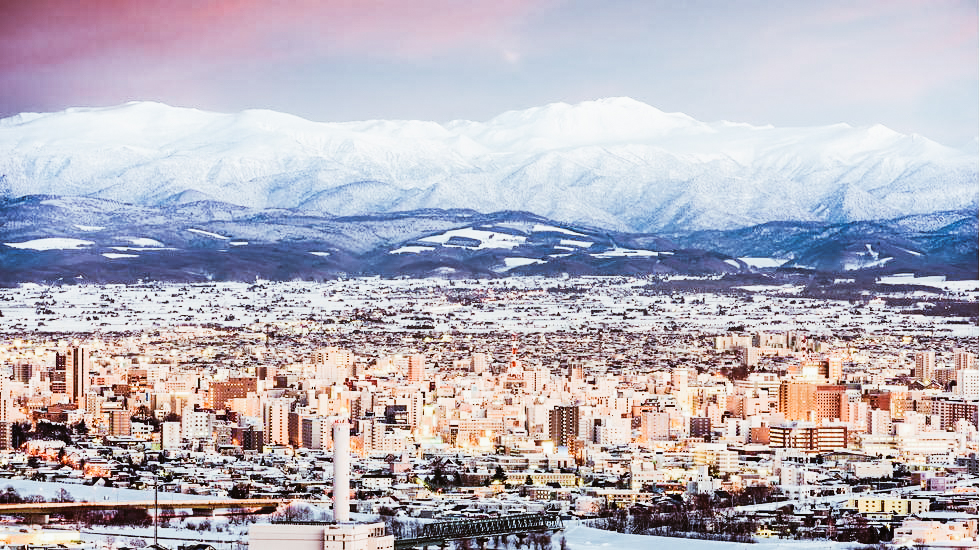
photo credits: suitcasemag.com/
Sapporo is a Japanese city, capital of the Hokkaidō prefecture, located in the southwestern part of the island of Hokkaidō, known for hosting the 1972 Winter Olympics, the first held in Asia, and for the famous Snow Festival that attracts over 2 million tourists from all over the world.
What to see in Sapporo
The historic village of Hokkaido
Of course, we start with the Hokkaido Historical Village, which is an open-air museum. 60 buildings from the past with various sections including towns and villages Don't miss these moments!
Instead, ìthe Sapporo Snow Festival (Sapporo Yuki Matsuri) takes place every February in Sapporo for a week. Born in 1950 when high school students started building snow statues in Odori Park, it is now a big event with spectacular snow and ice sculptures that attracts millions of visitors every year. In contrast, the Okurayama Observatory originated from the 90-meter ski jump used in the 1972 Winter Olympics! A must-see attraction, right in the Okurayama Ski Jump Stadium.
Want to relax after a long walk? Here for you is Moerenuma Park which is a park in the northeast of Sapporo surrounded by a swamp, a unique place that you definitely can't miss.
Here we are at the Hokkaido Historical Museum which documents the history of Hokkaido's development. You can find and see, in chronological order, the entire history of the prefecture from 20,000 years ago, to the post-war years after 1945.
Hungry? Shiroi Koibito Park is a chocolate company. Have you ever tried the Shiroi Koibito cookie? In case you've never tried it, it's two thin butter cookies with a layer of white chocolate in between. This is one of the top souvenirs in Hokkaido!
Thirsty? After chocolate, a good beer suits us perfectly, so we recommend the Sapporo Beer Museum.
In Japan beer was born in Hokkaido in fact, Sapporo is one of the oldest and most popular brands in the country. This beer is produced, precisely in Sapporo, in 1877 and is famous throughout the world, you will have happened to find it in restaurants here in Italy! The museum will show you the production process of beer and not only that! You can end the visit with a unique tasting!
Our visit ends in relaxation in the Botanical Garden that has a mainly didactic purpose, apart from being a pleasant break for visitors. In our opinion absolutely not to be missed, especially if you are looking for a moment of peace during the excursions and visits.
Kamakura
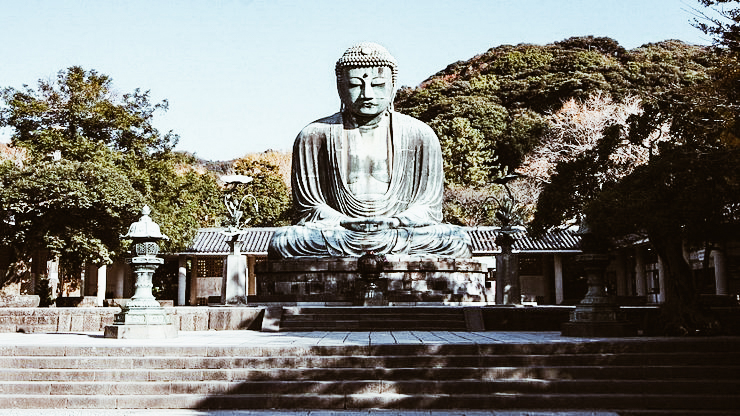
photo credits: japan-guide.com
This is a very important place that we at Japan Italy Bridge absolutely recommend. We are talking about Kamakura, a tourist and also seaside resort easily accessible from Tokyo. If you need a moment of relaxation during your trip to Japan, you can count on Kamakura.
Just think that Kamakura is facing the ocean, with its beach about 2 km long that takes two different names, Yuigahama Beach and Zaimokuza Beach. All around are hills and forests, crisscrossed by various trails. Among these is the Daibutsu path that leads from the great buddha to the Kita-Kamakura station, the Genjiyama path that starts from the Jufukuji temple and connects to the Daibutsu path, about at the height of the Zeniarai Benten temple, the Gionyama path near the Myohonji temple and the long Tenen path that connects the Kenchoji temple to the Zuisenji and Jomyoji temples.
During the Heian period it was the capital of the Kantō region and in 1192 the shogun Minamoto no Yoritomo moved his new capital here, transforming Kamakura din a real political centre of Japan.
What to see in Kamakura?
Kamakura is mainly known for its temples and altars and the one that we loved the most perhaps because of the bond that we feel towards this family of Samurai, is the shrine Tsurugaoka Hachimangu. The shrine is dedicated to Hachiman, the patron god of the Minamoto family and Samurai in general. On a terrace at the top of a staircase you can find the main hall with a small shrine museum, which displays various treasures such as swords, masks and documents. Next to this grand staircase, you could find a beautiful gingko tree that delighted visitors' eyes with its golden color every autumn, which unfortunately did not withstand a storm in 2010. Before entering the staircase, you can find the Maiden, a stage for dance and music performances.
The large statue of Amida Buddha, on the other hand, is located in the Kōtoku-in temple and is the most important statue in the country. Think that the temple in which it was located was destroyed during a tsunami in the fifteenth century, but the statue resisted and since then it is outdoors. The town is also home to the tombs of Minamoto no Yoritomo and Hōjō Masako. Engakuji Temple is one of the main Zen temples in eastern Japan, founded by the ruling regent Hojo Tokimune in the year 1282.
We move on to Hasedera Temple famous for its eleven-headed statue of Kannon, the 9.18-meter-tall goddess of mercy. The Kannon museum displays some of the temple's treasures, including Buddhist statues, the temple bell and a scroll. Also beautiful is the location of this temple, built along a wooded hillside quilted with small lakes.
As we said, Kamakura is the place of temples and shrines, so we point out other names to visit: Kenchoji, The Zeniarai Benten (very important for tradition if you want to wash your money!) and Zuisenji.
Obviously, there are restaurants where you can taste the delicacies of the place.
Hakone

photo credits: gaijinpot.com
Another must-see destination in Japan, in our opinion, is Hakone. Easily accessible from Tokyo, it is a place that can offer you not only relaxation, but also unmissable experiences. Here is our virtual tour of Hakone!
What to see in Hakone
The first thing to see is definitely Lake Ashi. We left our hearts on that lake and the panoramic view of Mount Fuji in the background. A real picture that you will carry inside you for a lifetime. This picture is among other things one of the hallmarks of Hakone. To experience Lake Ashi in all its beauty, you can cross it thanks to three vessels inspired by the ships of the eighteenth and seventeenth centuries. Special views, the important ports of Hakone, Machi and Porto Moto will make your moments unforgettable and you will feel part of that unique picture.
Always in the name of relaxation, remember that Hakone is the city of Onsen or hot springs. Today of the wonderful thermal centres, these Onsen will offer you the heavenly moment of relaxation, pampering all your senses. The Yumoto spring is the oldest and is located near Odawara. You are spoiled for choice, among the names we recommend is definitely Hakone Kamon, with its pools made externally of wood and stone.
After relaxing, it's time to visit the Hakone Shrine, Hakone Jinja which is located right on the shores of Lake Ashi. It consists of many buildings scattered in the forest, with a staircase embellished with lanterns that will make the walk a fairy tale.
Let's move on to the wonderful Odawara Castle built in the mid-fifteenth century in the hands of the Hojo Clan. We are in 1950 when Toyotomi Hydeyoshi defeated the Hojo Clan and reunited Japan. This castle is rich in history, three stories high seen from the outside and four inside. Inside the castle, you can see valuable period furnishings, armour and other items of historical interest and if you really want to enjoy a spectacular view, look at the whole city from the other in the highest floors! For Museum lovers, here is the Odawara Castle Historical Museum, with a very interesting interactive exhibition of objects related to the history of the castle.
On the other hand, the Gora Park is a French-style park with a large fountain, a rose garden and two greenhouses with tropical plants and flowers, a restaurant, a tea room and a Craft house, where you can try various workshops such as pottery making, glass blowing and ikebana composing.
After all that, what to do to extend your life? I'm not kidding, but I'm talking about Owakudani's black eggs. We are in a volcanic area famous for kuro tamago chicken eggs made black by cooking in hot springs. According to Japanese tradition, if you eat kuro tamago you will extend your life by 7 years! You will find them only in Owakudani!
Viaggiare il Giappone in sicurezza
Obviously, these are just some of the places that we propose, but Japan should be seen all. Each temple, each shrine, each garden is a world unto itself, something that cannot be found in other parts of the world. If you want to experience many different worlds in one place, you can't do without Japan. Thanks to JNTO, you can have a personalized and safe trip! With JNTO, especially in this moment of pandemic for COVID-19, you can explore Japan in absolute safety, visit the places you love without fear and in complete tranquillity. We like to repeat that with JNTO will always be guaranteed the right distance, temperature detection in stores and places of interest, protections such as the mask. Safety first and no risk, to enjoy a trip with a capital V do not be afraid and rely on JNTO! We have done it several times and we can assure you that the experience will be not only unforgettable but also in complete safety!
Also in collaboration with JNTO, don't forget the Hiroshima Hakken menu at TENOHA Milanoa! While waiting to leave, you can enjoy Hiroshima's specialties with this special TENOHA menu sponsored by JNTO Japanese National Tourist Board! This special menu that, with its sake tasting, will keep you company throughout January! The best sake in Hiroshima is here!

Night Emperor, Honshu ichi, Zoka, Itteki Nyukon, Sempuku Shinriki are the sake from Hiroshima that will remain available for you all January with the Sake Tasting! Here are their characteristics:
Honshu ichi
Night Emperor, Honshu ichi, Zoka, Itteki Nyukon, Sempuku Shinriki are the sake from Hiroshima that will remain available for you all January with the Sake Tasting! Here are their characteristics:
‘Zoka’
Junmai Daiginjo is made from "Yamada Nishiki" sake rice grown in a field located about 6 km north of the brewery, using Saijo underground water and the Hiroshima Mori technique. The delicate aroma and sweetness of the transparent and gentle rice harmonize perfectly with the fresh acidity. You can enjoy it cooled with a thin cup or glass of wine. Sake certified with Saijo JAPAN brand)
Itteki Nyukon
This sake has as first material the rice suitable for its preparation. A slightly dry Junmai Ginjo sake that goes well with foods with the right acidity, good both cold and hot.
Sempuku Shinriki 【Nickname】Filled with happiness
Kamiriki rice, which is the origin of Chifuku, is 85% processed and is close to the processing speed of rice from the Meiji and Taisho eras. A bottle full of feelings for the preparation of sake, especially suitable for people who particularly care about Japanese sake.
Night Emperor
Night Emperor is a mixed Hachitan Nishiki based liqueur produced in Hiroshima Prefecture. Versatile liqueur is easy to combine with any dish. Soft taste that takes advantage of the characteristics of fresh water preparation and keeps the alcohol content low while maintaining the taste of koji and rice. Good tasted both cold and hot.
Start planning your trip to Japan and while you're doing it, enjoy the special Hakken of Hiroshima at TENOHA Milano for the whole of January! As you can see, JNTO is close to you at all times, reminding you that Japan is a destination that will give you all the security you are looking for!
Japan History: Ankokuji Ekei
Although Ankokuji Ekei (1539 - November 6, 1600) was a member of the Aki Takeda clan, his year of birth and his father are still uncertain. His year of birth varies from 1537 to 1539 and whether his father could have been Takeda Nobushige or Takeda Shigekiyo.
Ankokuji Ekei, samurai, monk and diplomat
Author: SaiKaiAngel
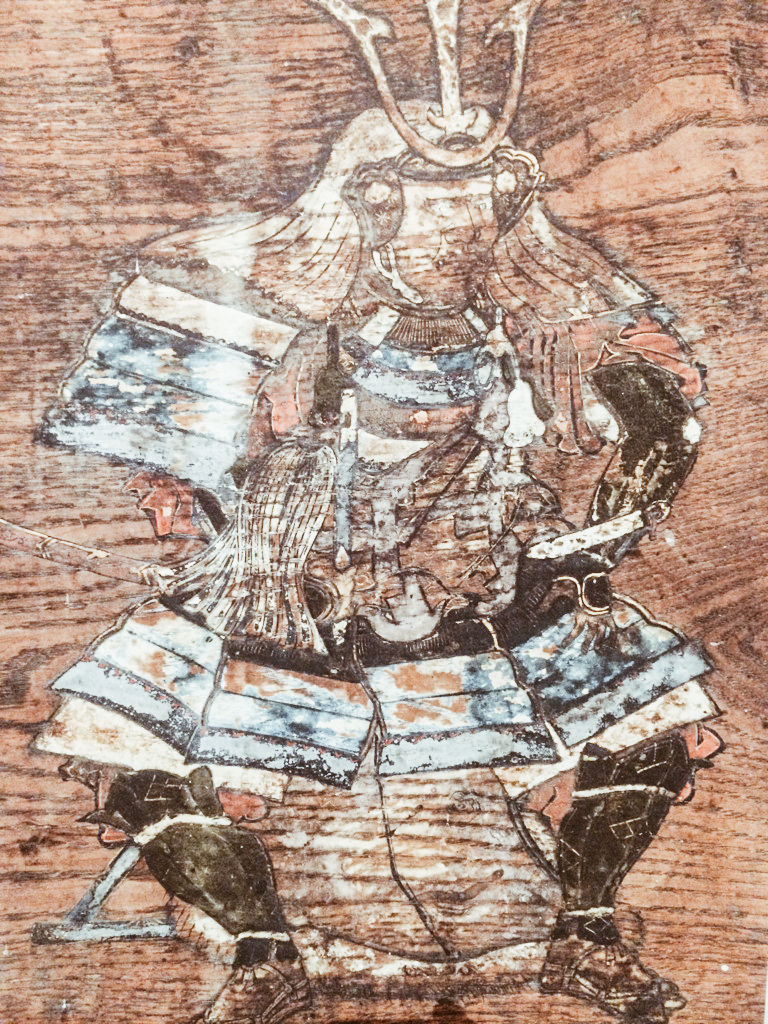
photo credits: samurai-world.com
When the Aki Takeda were destroyed in 1541 by Mori Motonari, Ankokuji Ekei was taken to a safe place in the temple of Ankokuji, which was located in the province of Aki.
At that time, Ankokuji Ekei changed his life becoming a Rinzai Buddhist monk and also a diplomat of the Mōri clan. It was the year 1585 when Toyotomi Hideyoshi praised his negotiations when the Mori clan formally served Hideyoshi. As Hideyoshi's advisor, he even received a feud of 23,000 koku in Iyo province as a reward after the invasion of Shikoku (1585).
In 1586, after the Kyushu Campaign, his possessions were expanded to 60,000 koku. He participated in the war of Imjin, the Siege of Shimoda and lost the battle of Uiryong against Gwak Jae-u.
Despite being a great priest, Ekei led the men for both Hideyoshi and Môri Terumoto. Ankokuji Ekei was present at the Siege of Shimoda in the Odawara Campaign (1590) and in the Korean Campaigns (1592-93, 1597-98) in Terumoto's staff.
In 1600 Ekei joined Ishida Mitsunari and exerted considerable pressure on Môri Terumoto, eventually prevailing on the advice of Kikkawa Hiroie. In the battle of Sekigahara, Ekei commanded 1,800 men on Nangu Hill, positioned near the troops of Hiroie and Natsuka Masaie. When the main armies were engaged around the village of Sekigahara, Ekei and the troops of Môri (commanded by Môri Hidemoto) decided to enter the fray and waited for Hiroie, the vanguard of Môri, to move. Unbeknownst to them, Hiroie had negotiated a secret agreement with Ieyasu and had no intention of moving.
Ekei and the Tokugawas
Ekei and Natsuka had no intention of doing anything so the 25,000 soldiers under Môri command remained inactive. This inactivity sealed a defeat that became devastating after the betrayal of Kobayakawa Hieaki, and once the matter was clearly decided, Ekei and his comrades thought it was better to retreat in a hurry.
Ekei tried to flee to To-ji, but was captured according to legend by a rônin who had an old grudge against him. Tokugawa sentenced him to death on Kyoto's Rokujo-ga-hara, and was beheaded together with Konishi Yukinaga and Ishida Mitsunari.
Business Focus: Digital transformation, the key to increase the economy
This pandemic has hit the world economy hard and one of the keys to recovery is digital transformation. Let's continue our business focus and today we are talking about just how much an online presence can influence the economic development of Italy and Japan.
The Digital transformation: could it be the key to increasing Japanese consumer spending?
Author: Erika
In recent months, many companies have launched themselves into the digital world and many shops have transported their windows into the area of e-commerce. This clever move has allowed them to continue working even during the months of lockdown, and not to stop their production.
However, in Japan, as well as in Italy, the economic recovery has slowed down considerably. For what reason? The reason for this is that in both countries the spread of e-commerce and online presence is lagging far behind other countries.

During the months of the lockdown, people drastically reduced their visits to shopping areas. However, in OECD (Organisation for Economic Co-operation and Development) countries, retail sales have increased and on average above the pre-pandemic level. This means that the majority of sales were made through online sites and e-commerce.
The situation is different not only in Italy but also in Japan. Here, sales are still below the levels recorded before the pandemic. In these two countries that are so different and yet so similar, people have locked themselves in their homes without spending money. In fact, at the end of June, Japanese households' cash and bank deposits reached a record figure (1,030,000 billion yen).
However, this did not help the economy, which was already severely affected by the repercussions of COVID-19. According to some, this brake is due to the insufficient development of the e-commerce sector and the scarce online presence of companies in the two countries, both Italy and Japan.

In fact, according to a 2019 statist survey, only 16% of Japanese people said they had purchased online in the previous year. This figure ranks fourth among the 45 developing economies. It is therefore conceivable that once the digital transformation arrives in Japan, the potential for increased household spending could be enormous. In fact now, after months of pandemics and constraints, consumers are tired of staying at home and are willing to spend.
How to get the digital transformation to Japan?
Everything we have said so far, are hypothetical speeches with enormous potential. However, in order to turn this potential into a real economic recovery, the government and firstly the companies themselves would have to invest in digital. We are referring to the creation of e-commerce, websites, social media channels and influencer marketing so that the business linked to these companies can restart.
In support of this theory, leading Japanese companies plan to invest 16% more in digital for the fiscal year 2020. In fact, a total of 765 companies aim to spend 471.8 billion yen ($4.45 billion) on technology, shows a survey Nikkei on listed companies and those with 100 million yen or more capital. This marks a second consecutive year of double-digit growth.
With the pandemic disrupting the flow of people and goods, companies are turning to technology to adapt sales and distribution channels to the new norm. Seven & Holdings, the company behind the 7-Eleven convenience stores, expects technology investment to increase 19.9% to 121.2 billion yen - the largest sum on the list.
Investments in technology have already borne fruit and a return on these investments that can only accelerate. In fact, the companies that have embraced the digital transformation are the ones that are doing the best in this pandemic.
"Business leaders are forced to adapt to the coronavirus, and now they realise the importance of digital transformation," said Saisuke Sakai of the Mizuho Research Institute. "IT investments could grow even more in the future." / source: Nikkei
This leads us to understand that now more than ever it is time to invest in digital and create an online presence for your company in both Japan and Italy. Only in this way, companies will be able to keep their work going and have constant sales even in these uncertain times.
Japan Italy Bridge keeps you informed about the suggestions for companies in our business focus feature, or you can find us on facebook and tell us your opinion. Alternatively, you can join our newsletter or request a quote on our services to communicate your company in Japan and Italy and be part of the digital revolution.
Contemporary Japanese artists abroad
Japan, like Italy, is a country very attached to art and many contemporary Japanese artists have exported their works abroad.
Contemporary Japanese artists abroad
Author: Sara
Museums, art fairs and expositions have allowed the Japanese contemporary art world to look outwards. At last, even great artists are going out beyond the borders of the Rising Sun. We at Japan Italy Bridge have decided to introduce you to some of the most important contemporary artists who have received worldwide acclaim. We are talking about creatives like Yayoi Kusama, Tatsuo Miyajima, Takashi Murakami, Yoshitomo Nara and Hiroshi Sugimoto. Are you ready for this trip?
Yayoi Kusama

photo credits: wsj.com
Born in Nagano in 1929, Yayoi Kusama is perhaps the best known among Japanese contemporary artists. She began to show her immense artistic talents at the age of 10. The difficult relationship with her mother and trauma that deeply affected her led Kusama to paint her experiences on the canvas. The physical environment and her personality vanished swallowed up by the space that moved at an incredible speed. She also began to draw inspiration from Georgia O'Keeffe and wrote a letter to her. The artist replied and Kusama moved to New York where he began making monochrome paintings that immediately attracted attention.
The early 1960s were certainly not easy for a woman, especially a Japanese woman, and being able to exhibit in galleries was a difficult undertaking. However, she did succeed and became increasingly well known in the field of conceptual art. Her works include attributes of feminism, minimalism, surrealism, surrealism, art brut, pop art and abstract expressionism, all united by the polka dot technique.
Back in Japan, the artist was able to enjoy the success she deserved. Her works were exhibited at the Museum of Modern Art in New York, the Tate Modern in London and the National Museum of Modern Art in Tokyo. Between 1994 and 2012, Kusama collaborated with the musician Peter Gabriel and especially with Marc Jacobs, artistic director of Louis Vuitton. Kusama now lives in the Seiwa Psychiatric Hospital in Japan by personal choice and continues to paint daily in his studio in Shinjuku.
Tatsuo Miyajima
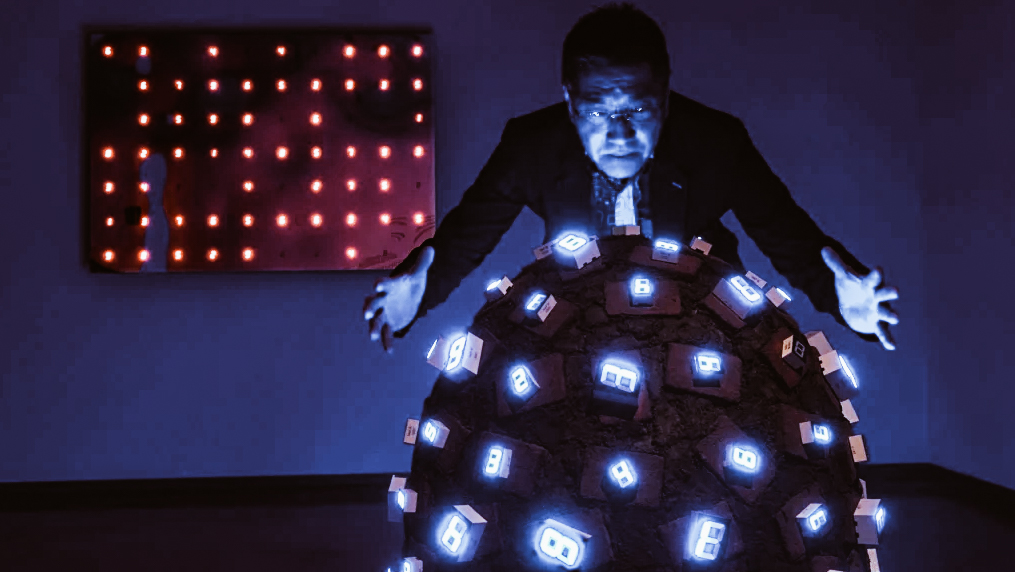
photo credits: smh.com.au
Born in Tokyo in 1957, Tatsuo Miyajima graduated from the oil painting course at the Fine Arts Department of Tokyo National University of Fine Arts and Music. He began experimenting with performance art before moving on to light-based installations.
Miyajima stated that the desire to create more lasting work, in contrast to the necessarily ephemeral nature of his performance and actions, motivated him to start working on sculptures and installations. Using contemporary materials such as electrical circuits, video and computers, Miyajima's highly technological work focused on the use of digital light-emitting diode (LED) counters. These numbers, flashing in continuous and repetitive cycles from 1 to 9, represent the journey from life to death, whose purpose is symbolised by the "0", a number that never appears in her work.
Miyajima has had solo exhibitions at the Ullens Center for Contemporary Art in Beijing, the Miyanomori Art Museum in Hokkaido, and the San Francisco Museum of Modern Art. She has also taken part in the Venice Biennale and numerous group exhibitions, from the Museum of Contemporary Art in Sydney to the Hiroshima City Museum of Contemporary Art. Since 2006 Miyajima has been Vice President of the Tohoku University of Art and Design.
Takashi Murakami
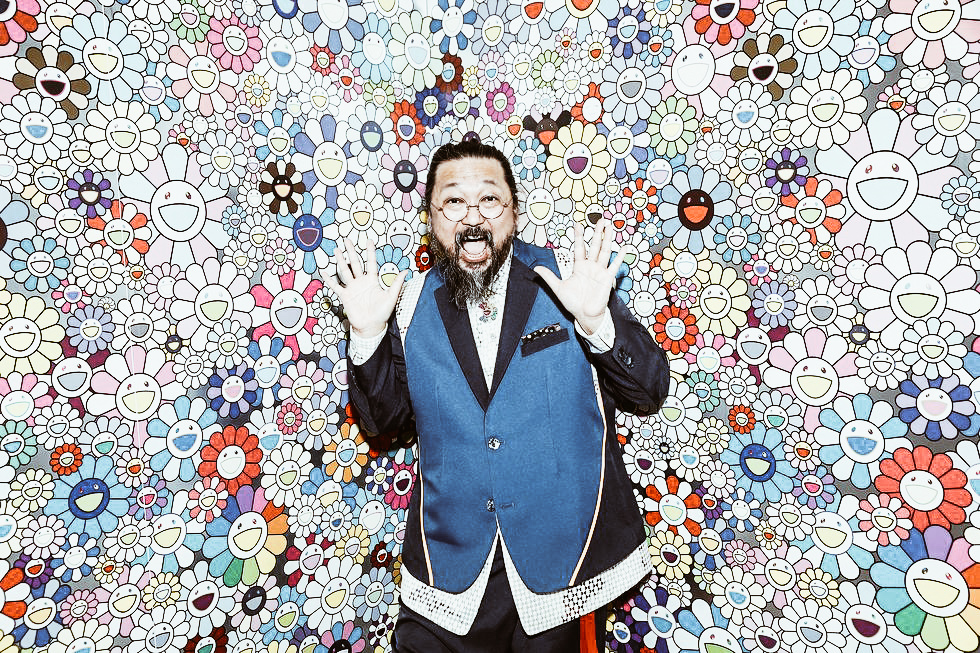
photo credits: crfashionbook.com
Born in Tokyo in 1962, Takashi Murakami began his studies of traditional Japanese painting at Tokyo Geijutsu Daigaku. However, his aspiration was to become a great mangaka. After graduating with a degree in traditional Nihon-ga painting, he won a MoMA PS1 scholarship. He moved to New York enriching his influences with the works of Andy Warhol and drawing inspiration from the production philosophies of film companies such as Disney, LucasFilm and Hayao Miyazaki's Ghibli Studio.
Among the various solo exhibitions, there is one that will mark the birth of a new Japanese art movement: "Superflat". This was the title of the exhibition at MOCA in Los Angeles which became the artist's programmatic and aesthetic manifesto systematically promoting the value of Japanese art independent of Western influences. An art capable of expressing the cultural reality of the new Japan. Superflat in fact mixes otaku elements with Kabuki and jōruri elements, fused and flattened into images with smooth surfaces and brilliant colours in which the aesthetic themes are amplified and exalted.
Murakami collaborated with Marc Jacobs and created the limited-edition Cherry Blossom bag for Louis Vuitton, designing for the occasion a kawaii pattern with the monogram of the fashion company.
Thanks to his aesthetic and entrepreneurial approach to art, Murakami has fully entered the international elite art scene, selling through third party companies, objects destined for the mass market, inventing and promoting the Kaikai Kiki and GEISAI brands.
Yoshitomo Nara

photo credits: scmp.com
Born in Hirosaki in 1959, Yoshitomo Nara studied at the Prefectural University of Fine Arts and Music in Aichi and at the Kunstakademie in Düsseldorf.
Nara is known for his paintings whose subjects are deceptively simple. We find children and animals in pastel colours with cartoon-like features with little or no background that appear both sweet and sinister. They also sometimes wield weapons such as knives and saws and their looks are accusatory. His art is a metaphor that accuses people of attacking the innocence of childhood.
Nara's objective perversions are rooted in Japanese popular culture, but these influences are mixed with those of Eastern and Western society. Her paintings, sculptures, installations and engravings explore the themes of isolation, rebellion, spirituality and religion.
Hiroshi Sugimoto
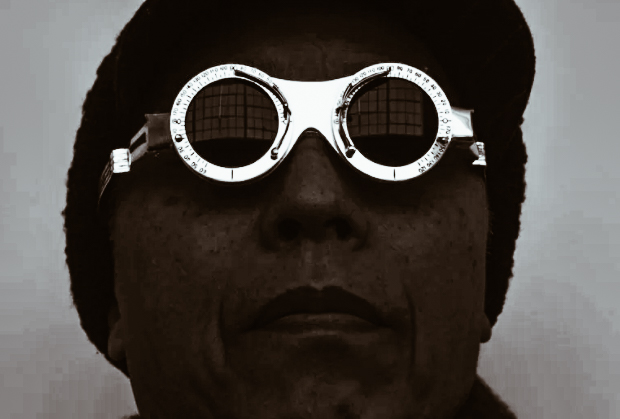
photo credits: artslife.com
Born in 1948 in Tokyo, Hiroshi Sugimoto, after obtaining his Bachelor of Arts degree, moved to Los Angeles to study photography. These studies led him, in the 1970s, to establish himself as one of the most famous contemporary photographers.
His work deals with history and temporal existence, investigating themes such as time, empiricism and metaphysics. Sugimoto has received numerous grants and his works are exhibited in the collections of the Tate Gallery, the Museum of Contemporary Art, Chicago, the Metropolitan Museum in New York and the Guggenheim in New York.
Like many contemporary artists, Sugimoto has collaborated with fashion, this time with the French company Hermès. Sugimoto's colour photos for Hermes' foulards were exhibited in June 2012 at the Museum of Cultures in Basel. During the 2014 Venice Biennale, Sugimoto unveiled his "Glass Tea House Mondiran" at Le Stanze del Vetro on the island of San Giorgio Maggiore.
The art world is full of facets given by continuous inspirations, by the search for the ego, by the need to express profound concepts without the use of words. Which of the contemporary Japanese artists have impressed you the most? Let us know in the comments!
Business Focus: Digital events during the pandemic
In 2020 we had a very special year and also for those who like us work in marketing there was an invasion of digital events. We experienced new ways to stay in touch, new ways to embrace each other, new ways to study and work. These are not ways of living and working that we should never have known, on the contrary! The year 2020, said in a very positive way, has accelerated many of these processes. What can the positive pandemic bring us? Surely, looking at the situation, we can answer with "very little", but let's try to look beyond everything.
Digital events: opportunities during the pandemic
Author: SaiKaiAngel
Did this 2020 make the leap into the future shorter? Definitely yes! As for us at Japan Italy Bridge, for passion or need, we made sure to stay afloat and continue to present our proposals ... online!
Anyway, we were already organized and prepared for this, considering the sentence we always said when introducing ourselves as "The future is online". Now, we are sure that that phrase, which we were waiting for it to become our daily heritage maybe in a while, has suddenly become customary good from this moment! We at Japan Italy Bridge are committed, waiting to be able to physically embrace you again, to build and propose digital events and situations that can give you emotions, if not equal, but similar to physical ones.

We have experienced, during the lockdown, many online events such as school, work, webinars, meetings, often seeing them as something new and more exciting than the online presence. Why? Simply because we are facing something new. Before we get used to this too, let's try to exploit the enthusiasm in all its essence.
Digital Events
Let's talk about online events, for example. Yes, because apart from the online work we have always done, events were the only thing we kept offline and based only on the presence of people. While waiting to do it again, we looked for online solutions that could actually, for the moment, create if not the same enthusiasm, something similar.
How do you organize an online event?
First of all, you have to focus on the guests, just like the event in the presence, nothing changes! You have to identify the people who might be interested in that event and become an interesting link for companies that want to communicate their work to others.
What is the main goal of the online event?
The online event, like the offline one, is to reach as many interested people as possible. You have to make sure that you create the right platform and the right place for them to best facilitate their presentation and communication with other participants. The online event, therefore, becomes a favourable place to exchange opinions that can then become a tool for the contact between companies. One of the positive things we find in this is the reduction of organizational costs. It then becomes completely free without any problems of audio, lighting, culinary entertainment. The most important thing is to have a platform capable of holding and maintaining the event without problems and, certainly, a good connection. Among the most popular platforms are zoom and meet.
Another absolutely essential thing is the ability of the event's creator to entertain guests by ensuring that spaces and moments can be respected. In this case, we need a good "host" who is not very different from those we see on TV programmes. The presenter must be able not only to ensure that the times are respected but also to keep the enthusiasm high for the entire duration of the event, intervening when the situation fades away or when it becomes too bright. Nothing so different from the offline event, in short. This is proof that the creator of the event is part of a consolidated company capable of dealing with any type of situation.
At Japan Italy Bridge, for example, we focus on creating a bridge, as our name suggests, between Japan and Italy. Until this bridge can be built physically, as we have already done with our previous events, two random names "Japan meets Italy" and "Spindle". we are very keen to keep the interest and communication between these two nations high. For this reason we have studied how to make our events online and interesting.
Obviously, one of the things we think may be essential for a digital event, is not the payment, but at least the registration. Registration will allow us to have a closed list of participants and a beginning of moderation. The registration should at least contain the basic information: name, surname and an email to be contacted. In this way, you will be able to have not only a certain moderation of the event, but also a way to communicate suitable for your profile. The guest will not find a bedlam of people who are not interested in anything about the event, but only and only guests interested and enthusiastic to participate, listen and share.
Listening and sharing

Let's not go so far from the offline event, in this case, the focus is always the same: finding people and companies interested in sharing. We all know how difficult it can be to connect companies of different nationalities, but we are also sure that Japan and Italy have a lot to share and feel united, otherwise, we would not do this job!
The online event should not be scary, if we look at this carefully, we will realize that it is not so different from the event in presence.
So what do we need to create an online event?
- Identify people and/or companies that might be interested in the event.
- Create the right environment to facilitate communication between them, perhaps by establishing a dialogue first.
- Leave the guests in the right place and moderate the time available to them in order to make it the same for everyone.
- To have a good interlocutor and manager of the event that can enforce time moments and keep up the enthusiasm of the audience.
- To have the conviction to do the right thing, without being frightened by the difference between offline and online.
Whether it is on a digital platform and in presence, many things remain the same, one of which is enthusiasm.
Never lose your enthusiasm, it is what will allow you to live properly at any time, making the waiting less heavy and above all fruitful. You will learn to "feel" the enthusiasm of the other person and also to create new connections. make it a new challenge!
As for us at Japan Italy Bridge, we are ready to continue to build this bridge also digitally and then continue to do it in person.
Business Focus: E-commerce after the pandemic
The effects of the Coronavirus are still being felt, however, we are not talking about positive cases but about online presence and e-commerce. We continue our Business Focus features and today we are talking about how e-commerce platforms have influenced this 2020 and how they will influence our future.
The importance of e-commerce during and after the pandemic
Author: Erika
During this 2020 we understood how extremely important it is to have an online presence, for any company, even more so for shops. Not only social media but above all e-commerce has also depopulated due to the pandemic. With the forced closure of shops, in fact, many businesses have found themselves having to run for cover and create an online presence very quickly.
The impact that the lockdown has had on the habits of us Italians, but also of the entire world population, is extremely evident. In fact, in recent months, e-commerce has become one of the main channels to buy essential products without having to leave home.
We can in fact see from the data how between February and March 2020 online sales in Italy grew significantly compared to the same period in 2019. The favourite moments for Italians to shop are during the weekend. Precisely because of the coronavirus epidemic (COVID-19), on 8 March online sales increased by 90% compared to the same period of the previous year.

Some data
According to the GfK Consumer Panel, almost 4 out of 10 Italian households made their first online purchases in March. While, from the beginning of the year to date, 2 million new online consumers have been registered in Italy (out of a total of 29 million).
Between February and March 2020, online sales in Italy grew significantly compared to the same period in 2019. In fact, compared to the first six months of 2019, the total amount was 700,000 new consumers.
According to a recent survey conducted by Ipsos on the impact of the Coronavirus pandemic on individuals' attitudes and behaviour, in Italy, 31% of respondents said that the frequency of buying goods online has increased. On the other hand, almost half of the respondents stated that their frequency of online purchases has not changed at all.
Thanks to the COVID-19 pandemic, online retail platforms experienced an unprecedented increase in global traffic between January 2020 and June 2020, even surpassing the Christmas holiday traffic peaks. Overall, retail websites generated nearly 22 billion visits in June 2020, compared to 16.07 billion global visits in January 2020.

In short, having an online shop is now an inevitable option for any business. Moreover, according to analysts, the online commerce sector is the one that will grow the most in the world economy, with an increase calculated up to +55%.
This is precisely the time to equip and invest in digital technologies and focus on digital transformation. Adapting your services to online sales is the smartest move to make at this moment in history.
The cornerstones of a perfect e-commerce
By now we already know that the online consumer is much more demanding and sometimes more suspicious than the classic customer who visits us in the shop. However, user satisfaction is one of the fundamental cornerstones of a good e-commerce. Reliability and quality of service, user-friendly interface and customer service are fundamental points.
In addition, there can be no lack of excellent communication and marketing management specific to an online shop. Japan Italy Bridge not only builds high-level e-commerce but also communicates your brand online on various platforms. In fact, SEO optimization for an e-commerce and brand awareness help to increase sales and the customer's perception of the brand itself.
In particular, communication and marketing are the highest obstacle to overcome but also the focal point for the scope of an e-commerce. Investing in professional translations and a team that follows the social and digital marketing part helps to position your brand on search engines.
What Japan Italy Bridge recommends is to create a multi-channel system that will lead you to a winning e-commerce and increase your sales and revenues. together with that, you may also discover markets that were previously cut out of your sales strategy.
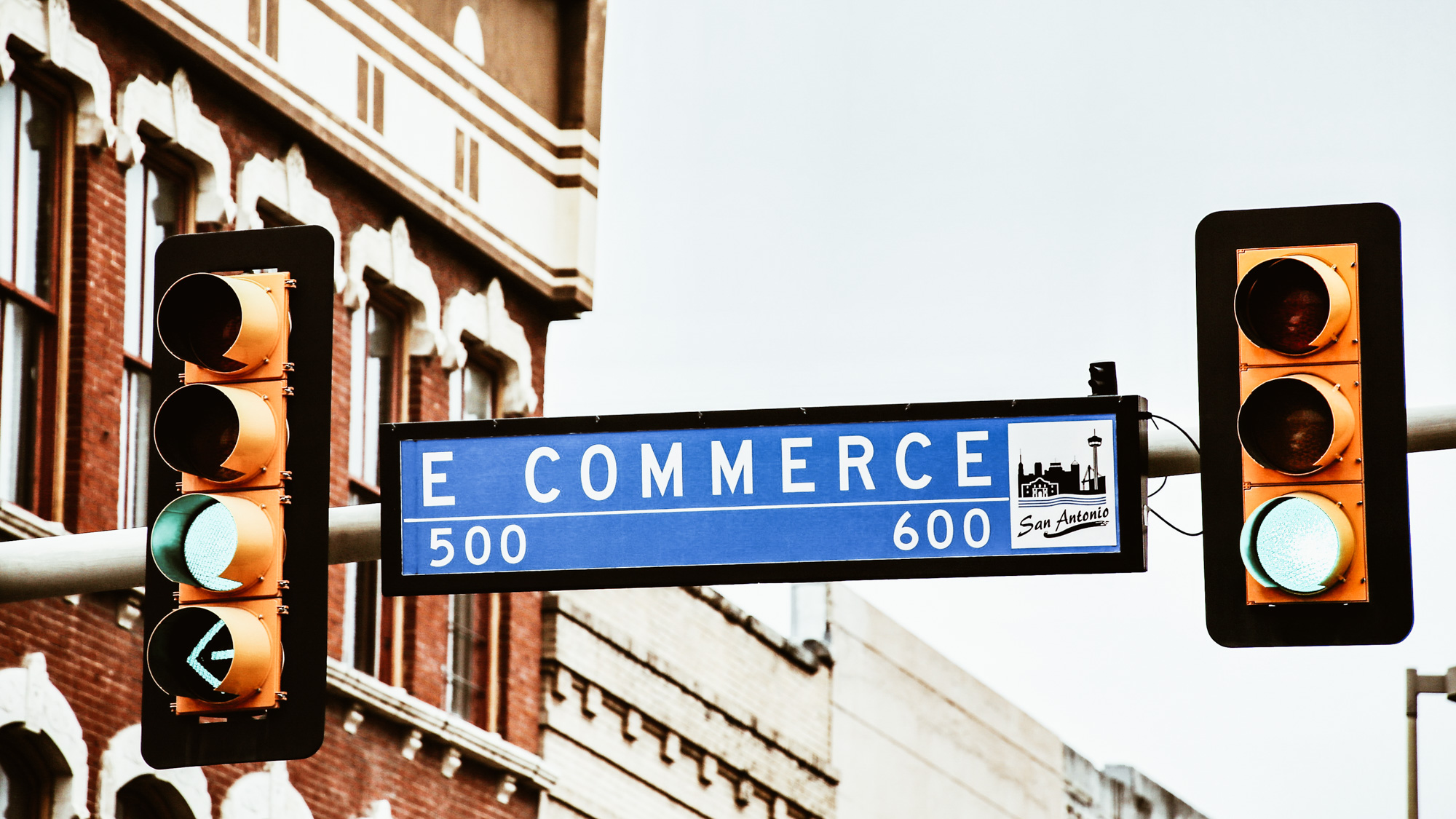
This COVID experience has taught us that we must always be ready for change and differentiate our presence on offline and online platforms. The way we sale our products and the means with which we do this have drastically changed. Virtual retail market has received disruptive effects that no one would have imagined until recently. This has had a major impact on the economy and organisation of many companies. Nowadays it is in fact normal not only to receive take-away food at home, but also other types of materials.
After the experience of the pandemic, it has become crucial to have an online presence. If your company is interested in building an e-commerce or interfacing with the digital audience, you can contact us and find out about our offers.








